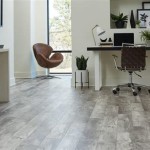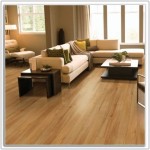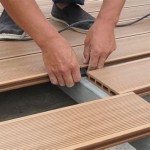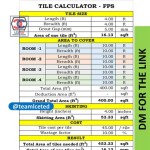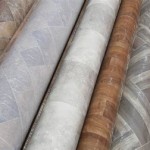Best Type of Wood Flooring For Dogs
Selecting the appropriate flooring for a home shared with canine companions requires careful consideration. Durability, scratch resistance, water resistance, and ease of maintenance are all paramount factors. Certain types of wood flooring are inherently better suited to withstand the wear and tear associated with dog ownership, offering a blend of aesthetic appeal and practicality.
The presence of dogs in a home presents distinct challenges to flooring materials. Constant foot traffic, potential scratching from nails, accidents involving urine or water, and the accumulation of dirt and debris all contribute to the accelerated degradation of flooring. Therefore, choosing a wood flooring option that can effectively mitigate these issues is essential for long-term satisfaction and preservation of the floor's integrity.
Hardness and Durability: The Janka Rating
The Janka hardness test is a standardized method used to measure the resistance of wood to indentation. This rating is a crucial indicator of a wood species' ability to withstand scratching and denting, particularly from dog nails. The higher the Janka rating, the harder and more durable the wood. This rating can serve as a pivotal element in determining the best wood flooring for homes with dogs. It is essential to remember that hardness isn't the only criteria, as grain pattern and finish will also play a part in how well flooring hides scratches and dents.
For dog owners, selecting wood flooring with a high Janka rating is generally advisable. Species such as Brazilian Walnut (Ipe), Hickory, and Maple tend to perform well due to their inherent hardness. These woods are less prone to scratching from dog nails and can better withstand the general wear and tear associated with pet traffic. Red oak is a frequently considered species for all-purpose flooring needs. While less resistant than those options listed above, it can still provide reasonably satisfactory wear. Consultations with flooring professionals and reviews of product specifications are recommended to confirm the Janka rating of specific wood flooring options.
It is important to note that even the hardest wood flooring can be scratched under certain circumstances. Regular maintenance, such as trimming dog nails, using floor protectors under furniture, and promptly cleaning up spills, is essential to preserving the condition of the floor, regardless of the wood's Janka rating. A proactive approach to floor care significantly extends the lifespan of any wood flooring.
Engineered Wood vs. Solid Hardwood
The construction of wood flooring influences its performance in a home with dogs. Solid hardwood flooring consists of planks made from a single piece of wood. Engineered wood flooring, in contrast, is composed of multiple layers of wood veneer bonded together, with a top layer of solid hardwood. This engineered construction offers several advantages, particularly in environments with potential moisture fluctuations. However, if scratched, solid hardwood can be sanded down and refinished more often than engineered hardwood, depending on the thickness of the top veneer layer. This provides a path to renew the surface of solid wood that is not always available for engineered products.
Engineered wood flooring is generally more dimensionally stable than solid hardwood, meaning it is less susceptible to expansion and contraction due to changes in humidity. This is a significant advantage in areas with high humidity or where spills are common. The multi-layered construction of engineered wood also provides greater resistance to warping and cupping, which can be detrimental to a floor’s lifespan. However, the durability of engineered wood flooring is directly related to the thickness of the top veneer layer. Thicker veneer layers allow for more sanding and refinishing, increasing the floor's longevity.
Both solid hardwood and engineered wood flooring can be suitable for homes with dogs, provided that the appropriate species and finish are selected. The choice between the two depends on individual preferences, environmental conditions, and budget considerations. When selecting engineered wood flooring, opting for a product with a thicker veneer layer is crucial for long-term durability and resistance to wear.
Surface Finish and Water Resistance
The type of finish applied to wood flooring plays a critical role in its ability to withstand the demands of a home with dogs. A durable, water-resistant finish protects the wood from scratches, stains, and moisture damage. Polyurethane finishes are a common choice due to their durability and resistance to wear. These finishes create a protective layer on the surface of the wood, preventing liquids from penetrating and causing damage. Consider using multiple coats of polyurethane for enhanced protection.
Water-based polyurethane finishes are generally considered more environmentally friendly and have lower VOC (volatile organic compound) emissions compared to oil-based polyurethanes. However, oil-based polyurethanes tend to offer greater durability and water resistance. The selection of a finish is based on a balance between environmental concerns and performance requirements. More recently available are newer treatments for water resistance involving the impregnation of the wood with polymers. These products, while potentially more expensive, tend to offer superior performance and durability.
In addition to the type of finish, the application process also impacts its effectiveness. Proper surface preparation, including sanding and cleaning, is essential for ensuring proper adhesion of the finish. Multiple thin coats of finish are generally preferred over a single thick coat, as this results in a more even and durable surface. Regular maintenance, such as cleaning with appropriate cleaning products and reapplying the finish as needed, is crucial for preserving the protective qualities of the floor.
Proper sealing and finishing of the floor, particularly around baseboards and other vulnerable areas, prevents moisture from seeping underneath the flooring. This is particularly important in areas prone to spills or pet accidents. Addressing potential moisture issues promptly can prevent costly damage and extend the lifespan of the floor.
Grain Pattern and Camouflage
Consideration should be given to the grain pattern of the wood flooring. Wood species with prominent grain patterns tend to conceal scratches and dents more effectively than those with smooth, uniform surfaces. The complexity of the grain helps to disguise minor imperfections, making them less noticeable over time. In the presence of dogs and general indoor traffic, subtle imperfections are virtually unavoidable, regardless of preventative measures.
Species such as hickory and oak, with their distinctive grain patterns, are well-suited for masking everyday wear and tear. These woods offer a more forgiving surface compared to species with less pronounced grain patterns, such as maple or birch. Opting for a wood with a pronounced grain pattern can reduce the perceived impact of scratches and dents, maintaining a more aesthetically pleasing appearance over time.
Additionally, consider selecting a wood with natural color variation. Variations in color further aid in concealing imperfections. Lighter-colored woods can also help to minimize the visibility of scratches. Stain choices can also influence a floor's ability to hide damage. Matte finishes can also help to minimize the appearance of scratches, as they tend to scatter light more than glossy finishes.
Maintenance and Cleaning Protocols
Regular maintenance is essential for preserving the condition of wood flooring in a home with dogs. This includes sweeping or vacuuming regularly to remove dirt, debris, and pet hair. Promptly cleaning up spills and accidents prevents staining and water damage. Using appropriate cleaning products specifically designed for wood floors is critical to avoid damaging the finish or the wood itself. Avoid using harsh chemicals, abrasive cleaners, or excessive amounts of water, as these can strip the finish and cause warping or discoloration.
When cleaning wood floors, use a damp mop or cloth, ensuring that excess water is wrung out. Avoid allowing water to pool on the surface of the floor. Dry the floor thoroughly after cleaning to prevent water spots and potential damage. Consider using mats or rugs in high-traffic areas, such as entrances and hallways, to protect the flooring from dirt and wear. Placing mats under food and water bowls can also help to contain spills and prevent water damage.
Trimming dog nails regularly will greatly reduce scratching. Providing designated scratching posts or mats can also help to redirect dogs' natural scratching behavior away from the flooring. Addressing behavioral issues, such as excessive digging or chewing, can also prevent damage to the floor. Employing preventive measures, such as utilizing furniture pads, offers a proactive strategy to minimize surface abrasions. Implementing these practices can significantly extend the lifespan and aesthetic appeal of wood flooring.

The 10 Best Types Of Wood Flooring For Dogs Floorings

How To Choose The Best Flooring For Dogs Home Depot

How To Choose The Best Flooring For Dogs Home Depot

How To Choose The Best Flooring For Dogs Home Depot

How To Choose The Best Flooring For Dogs Home Depot

The 10 Best Types Of Wood Flooring For Dogs Floorings
.png?strip=all)
What S The Best Dog Friendly Flooring America

How To Choose The Best Flooring For Dogs Home Depot

Pros And Cons Of Flooring Types For Dogs Floors Paws

What Is The Best Flooring For Dogs And Other House Pets
Related Posts


